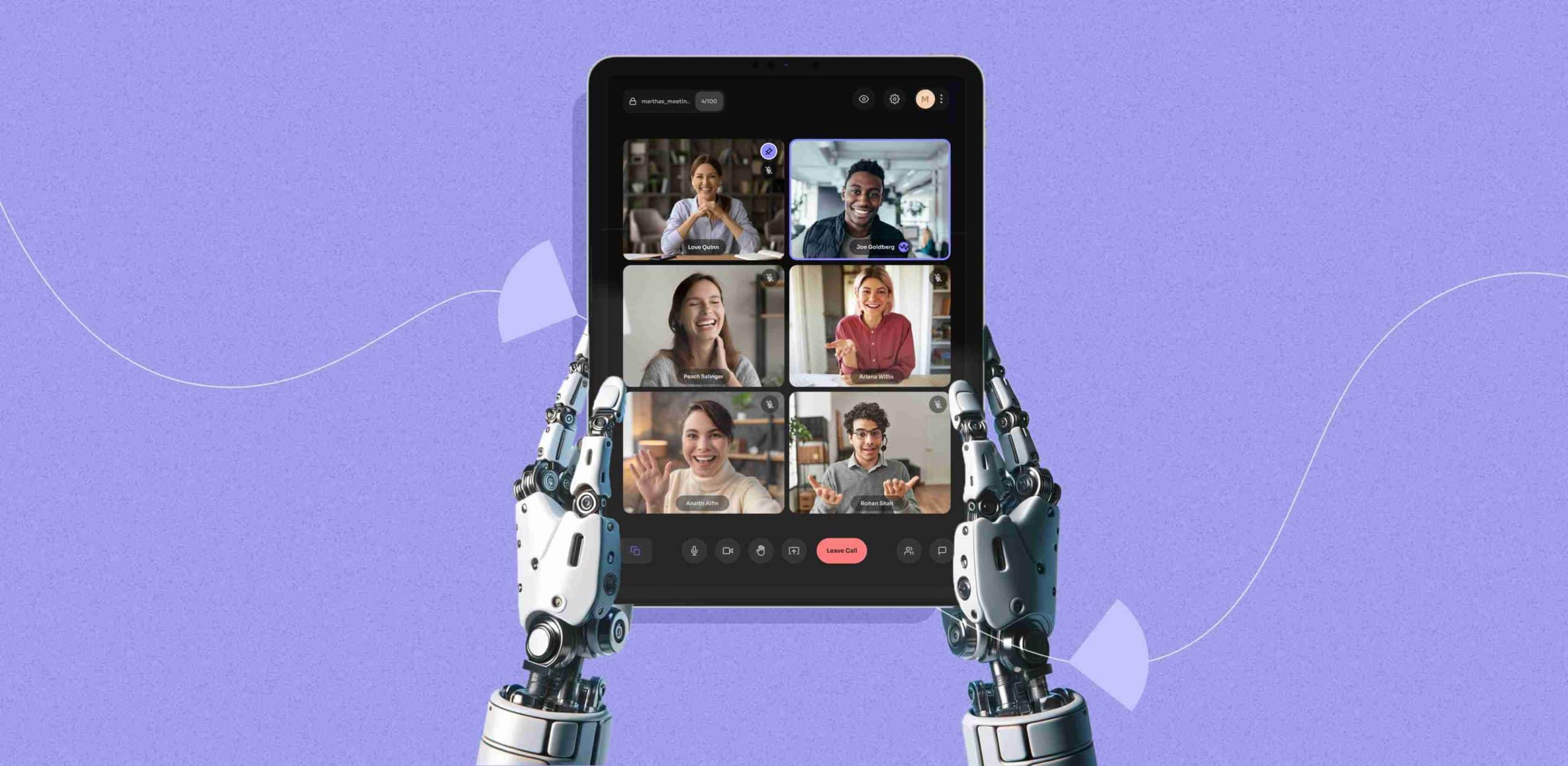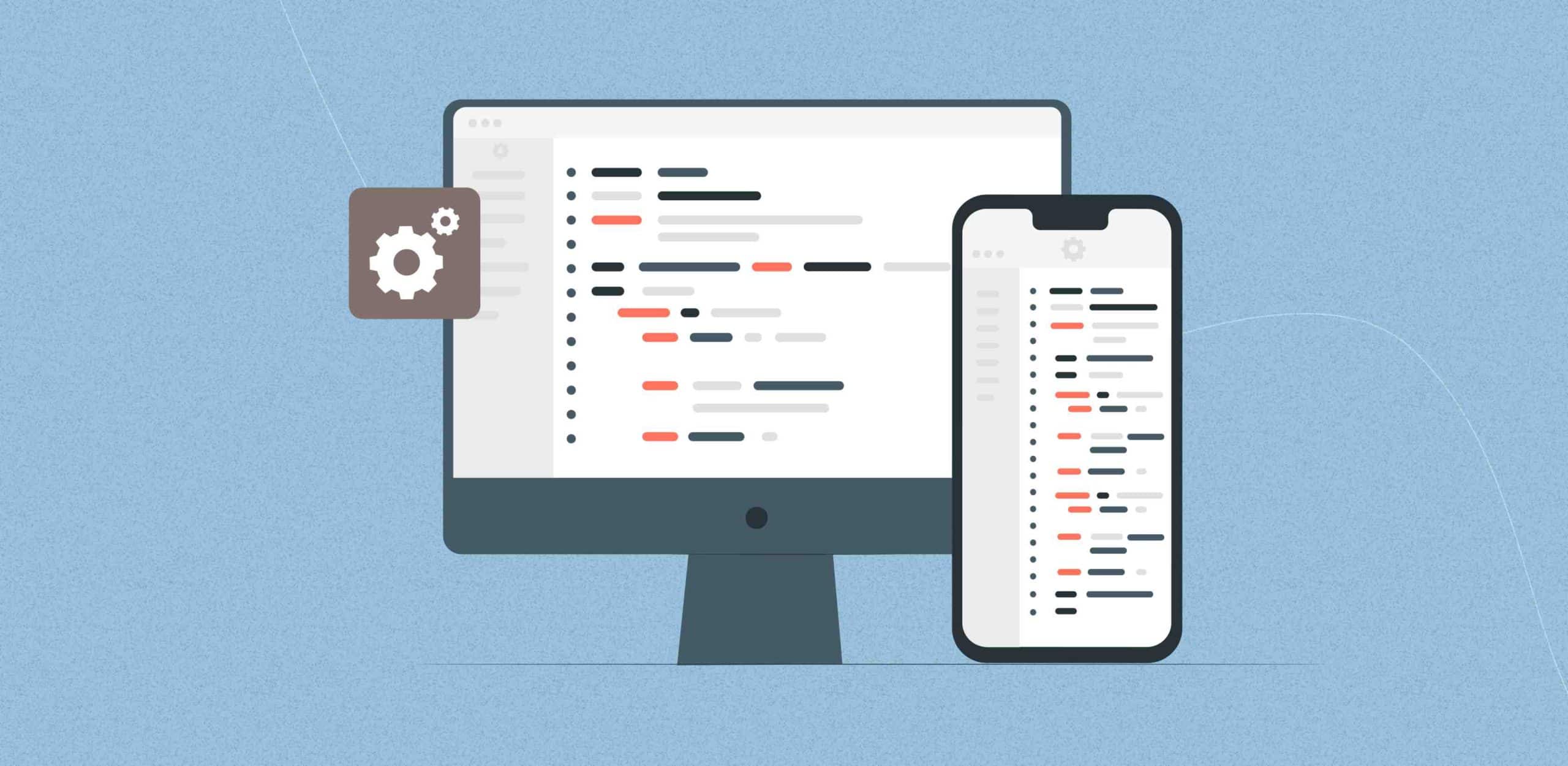AI (Artificial Intelligence) and WebRTC (Web Real-Time Communication) are two transformative technologies that stand at the forefront in the rapidly evolving world of digital communication. These technologies are revolutionizing how we connect, collaborate, and communicate across the globe. AI’s machine learning and natural language processing capabilities, combined with WebRTC’s real-time communication framework, are paving the way for next-generation communication applications. This synergy not only enhances user experience but also opens up new avenues for innovation in various industries.
Understanding WebRTC
WebRTC is an open-source project that provides web browsers and mobile applications with real-time communication capabilities via simple APIs. It enables audio and video communication to work inside web pages without needing to install additional plugins or applications. The fundamental components of WebRTC include:
MediaStream
At the heart of WebRTC’s functionality is the MediaStream component, which is responsible for capturing audio and video streams from the user’s device. This could include accessing the device’s microphone for audio input and the camera for video input. MediaStream ensures that these media streams can be seamlessly integrated into the communication process, allowing for a rich, interactive experience that mimics face-to-face interactions. By harnessing this component, developers can create applications that offer live video chats, audio calls, and more without compromising on quality or requiring additional hardware or software installations.
RTCPeerConnection
Central to enabling the direct, peer-to-peer communication that WebRTC is known for is the RTCPeerConnection component. This sophisticated element establishes a connection between peers on the internet, allowing for the direct exchange of data without passing through intermediary servers. This is crucial for maintaining the integrity and speed of the communication, ensuring that video and audio streams are transmitted with minimal latency. RTCPeerConnection handles the complexities of network connectivity, including traversing network address translators (NATs) and firewalls, to establish a reliable and secure connection between users.
RTCDataChannel
Complementing the audio and video capabilities of WebRTC, the RTCDataChannel component introduces the ability for bidirectional data transfer between peers. This feature extends the functionality of WebRTC beyond traditional communication, enabling the sharing of text, files, and other data types directly within the communication channel. Whether it’s sending a document during a video conference or sharing images in a chat application, RTCDataChannel facilitates a comprehensive communication experience that supports a wide range of use cases.
Originally developed to improve accessibility and reduce dependencies on platform-specific plugins, WebRTC has evolved significantly. From its inception, it aimed to standardize real-time, plugin-free video, audio, and data communication. Today, WebRTC is integral to various applications across industries, such as telehealth, e-learning, customer support, and social networking, providing seamless, real-time communication experiences.
WebRTC’s importance lies in its ability to enable direct, real-time communication on web browsers and mobile devices without the need for intermediaries or additional installations. This democratizes and simplifies communication, making it more accessible and efficient across different platforms.
The Impact of AI on WebRTC
AI technologies, particularly machine learning and natural language processing, are increasingly integrated into WebRTC applications. These integrations enhance the functionality and interactivity of real-time communication platforms, making them smarter and more responsive to user needs.
AI-Driven Features
AI-driven features like voice recognition, sentiment analysis, and recommendation systems have significantly improved user interactions within WebRTC applications. These technologies enable more intuitive and engaging communication experiences, from automated customer service chatbots to advanced video conferencing tools that can understand and respond to user sentiments.
How can AI be used for effective communication?
AI can be used to analyze communication patterns, predict user needs, and provide personalized experiences. By leveraging data from previous interactions, AI can suggest relevant information, automate routine tasks, and facilitate more meaningful conversations. Additionally, AI can enhance accessibility, offering real-time captioning and sign language interpretation to make communication more inclusive.
What is the role of AI-powered WebRTC in communication systems?
AI-powered WebRTC plays a pivotal role in modern communication systems by making them more intelligent, efficient, and adaptable. It enables automated, context-aware interactions and improves the quality and reliability of real-time communication. This technology also enhances security through AI-driven monitoring and threat detection, ensuring safer communication channels.
AI-powered WebRTC Applications and Use Cases
AI-powered WebRTC applications are revolutionizing the landscape of digital communication across a broad spectrum of industries, each benefiting from tailored innovations that address unique challenges and enhance operational efficiency. This integration of AI with WebRTC technologies is paving the way for more intuitive, secure, and accessible communication solutions, profoundly impacting healthcare, education, customer service, and remote collaboration.
Diverse Applications Across Industries
Healthcare
In the healthcare sector, AI-powered WebRTC technology facilitates remote patient monitoring and virtual consultations, enabling healthcare providers to offer timely and efficient care to patients regardless of their geographic locations. This technology significantly reduces the need for physical visits, making healthcare more accessible and convenient for patients, especially those in remote areas or with mobility challenges.
Education The education industry benefits immensely from virtual classrooms and AI-based learning assistance, making education more accessible and personalized. AI-enhanced WebRTC applications enable real-time, interactive learning environments that can adapt to the individual learning pace and style of each student, providing immediate feedback and support, thereby improving the overall learning experience.
Customer Service In customer service, AI-powered WebRTC introduces intelligent chatbots and personalized support mechanisms. These tools can handle inquiries and resolve issues in real-time, offering a more personalized and efficient customer service experience. The ability to analyze customer sentiment and tailor responses accordingly leads to higher satisfaction rates and improved customer loyalty.
Remote Collaboration
For remote collaboration, AI-enhanced WebRTC applications bring about smart meeting rooms and advanced project management tools. These applications facilitate seamless communication and collaboration among team members, regardless of their physical locations. Features like automated meeting summaries, task assignments, and progress tracking streamline project management and boost productivity.
Ready to enhance your communication applications with AI and WebRTC? Contact us today!
Specific Use Cases
Telemedicine Platforms
Telemedicine platforms leveraging AI and WebRTC offer diagnosis and treatment recommendations, transforming the delivery of healthcare services. These platforms can analyze patient data in real-time, assist in diagnosing by correlating symptoms with medical databases, and provide treatment recommendations, making healthcare more efficient and effective.
E-Learning Applications
AI-powered e-learning applications feature adaptive learning paths that customize content delivery based on the learner’s performance and preferences. This personalization enhances the learning process, making it more engaging and effective for students by focusing on areas that require more attention and adjusting the difficulty level accordingly.
Customer Service Platforms
Customer service platforms that utilize sentiment analysis can better understand customer emotions and tailor their service delivery for improved customer experiences. By analyzing the tone and context of customer communications in real-time, these platforms can adjust responses and escalate issues when necessary, ensuring customers feel heard and valued.
Potential for Future Innovations
The intersection of AI and WebRTC technologies heralds a new era of communication solutions characterized by unprecedented efficiency and personalization. The potential for future innovations within this realm is immense, driven by continuous advancements in artificial intelligence. These innovations promise to revolutionize how we interact, work, and connect in several ways:
Refining Speech-to-Text Accuracy
AI advancements are set to enhance the accuracy of speech-to-text services dramatically. This improvement means that voice commands and dictations will become more reliable, enabling users to interact with devices and services more naturally and efficiently. For industries relying on voice recognition, such as customer service or accessibility services, these enhancements will lead to significant productivity gains and better user experiences.
Improving Real-Time Language Translation
The ability to translate languages in real time is a game-changer for global communication. With AI-driven WebRTC technologies, we can expect to see substantial improvements in the speed and accuracy of real-time language translation, making conversations between speakers of different languages seamless and more accessible. This innovation will be particularly impactful in international business, education, and any context where people from diverse linguistic backgrounds interact.
Developing Sophisticated Emotion Recognition Capabilities
AI’s ability to recognize and interpret human emotions is set to advance further. Emotion recognition technology can analyze voice tones, facial expressions, and other cues to gauge a speaker’s emotional state, providing context that can enrich communication and enhance understanding. In customer service, for example, emotion recognition can alert representatives to a customer’s frustration or satisfaction, enabling a more tailored and effective response. In personal communication, it can help bridge the gap created by the lack of physical presence in digital interactions.
Conclusion
The fusion of AI and WebRTC is driving unprecedented advancements in communication technology, offering enhanced, efficient, and accessible communication applications. As these technologies continue to evolve, they promise to unlock new possibilities for innovation across various industries. For businesses and organizations looking to stay ahead in the digital era, implementing or custom-developing an AI-powered WebRTC app solution is a strategic move toward future-proofing communication systems.
Are you interested in leveraging the power of AI and WebRTC to transform your communication applications? Contact us for AI development services and WebRTC app development solutions. Our team of experts specializes in AI development and WebRTC app development, providing bespoke solutions that meet your unique needs. Let’s redefine the future of communication together.
Let’s transform your business for a change that matters.
F. A. Q.
Do you have additional questions?
What is WebRTC, and how does it enhance digital communication?
WebRTC stands for Web Real-Time Communication, an open-source project that enables real-time audio and video communication directly in web pages and mobile applications without additional plugins. It facilitates seamless, interactive experiences, making digital communication more accessible and efficient.
How does AI contribute to WebRTC technologies?
AI technologies, particularly machine learning and natural language processing, are integrated into WebRTC applications to enhance their functionality and interactivity. AI-driven features like voice recognition, sentiment analysis, and recommendation systems improve user interactions, making communication more intuitive and engaging.
Can AI and WebRTC be used for effective communication in different industries?
Yes, AI-powered WebRTC applications are revolutionizing communication across various industries, including healthcare, education, customer service, and remote collaboration, by providing tailored innovations that address unique challenges and enhance operational efficiency.
What are some AI-driven features available in WebRTC applications?
AI-driven features in WebRTC applications include voice recognition, real-time language translation, emotion recognition, and sentiment analysis. These features contribute to more personalized and efficient communication solutions.
How do AI and WebRTC improve accessibility in communication?
AI enhances accessibility in communication through features like real-time captioning and sign language interpretation, leveraging WebRTC’s framework to make communication more inclusive for individuals with disabilities.
What are the potential future innovations in AI-driven WebRTC technologies?
Future innovations in AI-driven WebRTC technologies may include further refinements in speech-to-text accuracy, improvements in real-time language translation, and the development of more sophisticated emotion recognition capabilities, enhancing personalization and efficiency in communication.
How does WebRTC work without requiring additional installations?
WebRTC is designed to work directly within web browsers and mobile apps using simple APIs, enabling audio, video, and data communication without needing external plugins or applications, thus streamlining the user experience.
What role does AI play in enhancing the security of WebRTC communications?
AI plays a crucial role in enhancing the security of WebRTC communications by implementing AI-driven monitoring and threat detection mechanisms, ensuring safer and more secure communication channels.
Are there examples of AI-powered WebRTC applications in use today?
Examples of AI-powered WebRTC applications include telemedicine platforms for healthcare, virtual classrooms for education, intelligent customer service chatbots, and smart meeting rooms for remote collaboration.
How can businesses and organizations implement AI-powered WebRTC solutions?
Businesses and organizations interested in leveraging AI-powered WebRTC solutions can contact specialized AI development and WebRTC app development companies for custom solutions that meet their specific communication needs and objectives.














